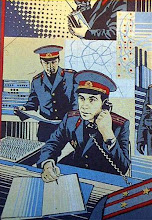
MANIFESTO!!!
1. No chords are required. Chords limit the sounds avaliable to the instrument, so rejecting chords sets the music free.
2. If chords are to be used, no more than two per song. The music is to be based in repetition and drone.
3. No set time limits on any pieces or recorded tracks. A piece may be as long or as short as the artist feels is needed. No true beginning or end is required, if the artist should feel that way.
4. No standard tuning is accepted, with the exception of drop tuning.
5. The sounds of blues music and it's derivatives are rejected, while world and ethnic music and it's instruments is embraced. However, though we move away from blues-based music, we are still to respect it and gain inspiration from it's pathos.
6. Vocals and lyrics are not required. However, if the artist opts to utilize them, they should be treated as another instrument in the sound, i.e, the vocals should not be the dominating structure of the song. Lyrics shouldn't reflect the personal, aiming more at society in general, its weaknesses and its strengths.
7. Humour is for the most part lost in music. Lyrics, in the event of their inclusion, should embrace humour, surrealism, and dadaism.
8. Effects to alter the sound of the instruments, such as heavy use of echo, distortion, reverb, etc, is encouraged.
9. Recorded tracks should be done in only one take. Mistakes, should they occur, are then left in the recording and assimilated into the sound texture. Editing is a lie and makes the piece artificial. Like the Remodernists, the Japanese idea of "wabi-sabi", the beauty of imperfection, should embraced.
10. The use of found sounds, musique concrète, and prepared instruments in recording and playing is encouraged.
11. Other art forms are to be embraced - film, theatre, dance, painting, fashion, etc, in order to make the project more full and to create a sense of community rooted in cooperation.
12. There should be no ego in the project: No one instrument is more important than another instrument. The whole of the sound is greater than the sum of the parts.
13. There is no clear definition of a "band". Any person with an instrument, ideas, and a willingness to adhere to the ideals of the Manifesto!!! is permitted to partake in the creation of the Sound.
14. Recording of tracks can be recorded on nothing larger than a four track recorder. This is to inspire cooperation and creativity.
15. Never solely adhere to the principles of any one manifesto, including this one. Doing so is submissive and detrimental to the creativity of art.
August 27, 2009.
Araque, Joshua
Berger, Edmund
Grodrian, Tyler
Wright, Joseph





